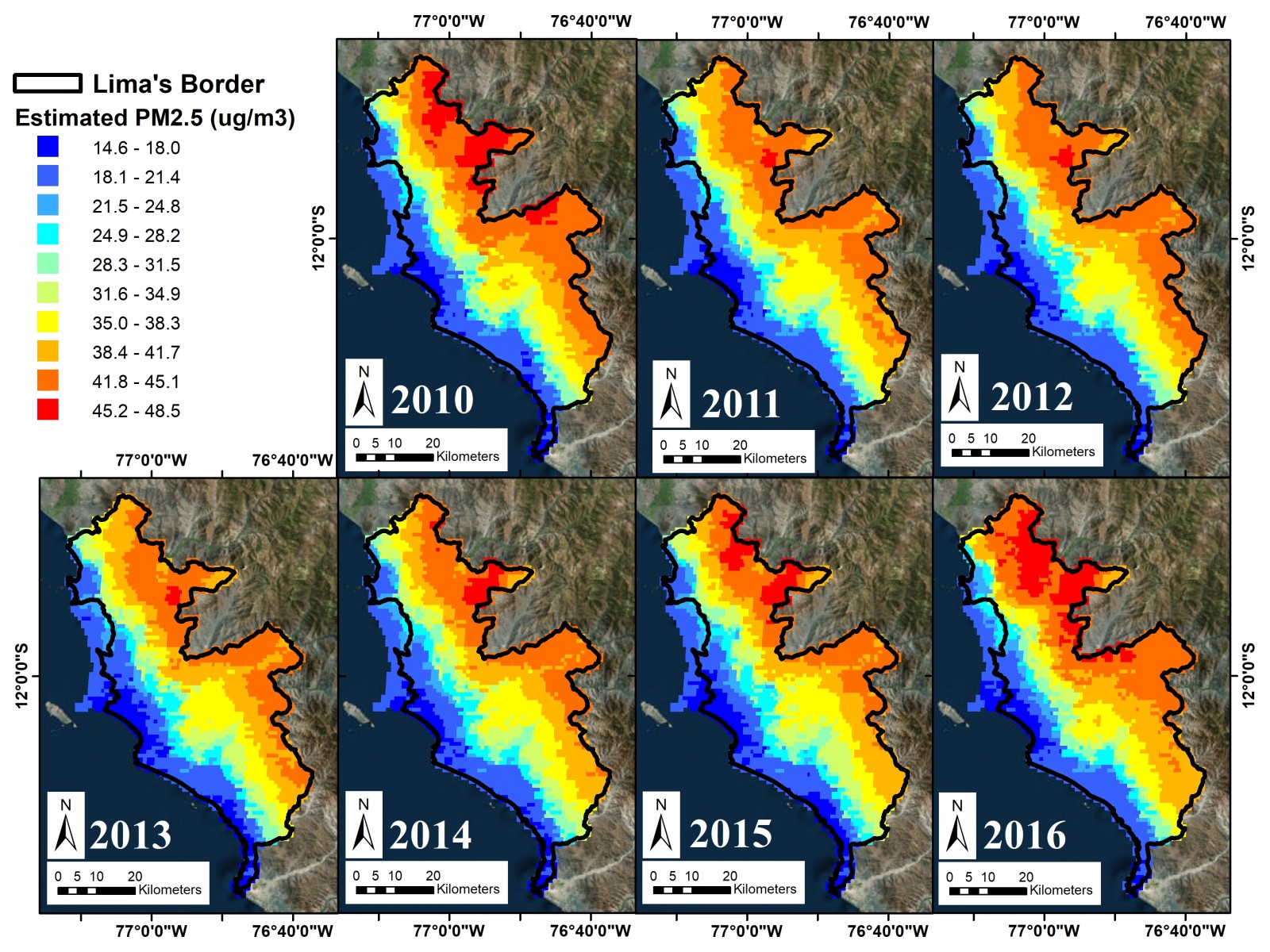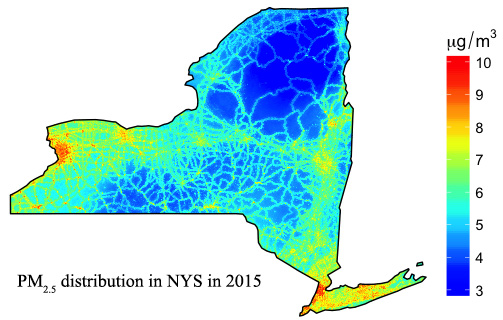We develop a method to combine PM2.5 estimated from satellite-retrieved aerosol optical depth (AOD) and chemical transport model (CTM) simulations using statistical models. While most previous methods utilize AOD or CTM separately, we aim to leverage advantages offered by both data sources in terms of resolution and coverage using Bayesian ensemble averaging. Our approach differs from previous ensemble approaches in its ability to not only incorporate uncertainties in PM2.5 estimates from individual models but also to provide uncertainties for the resulting ensemble estimates. In an application of estimating daily PM2.5 in the Southeastern US, the ensemble approach outperforms previously developed spatial-temporal statistical models that use either AOD or bias-corrected CTM simulations in cross-validation (CV) analyses.

